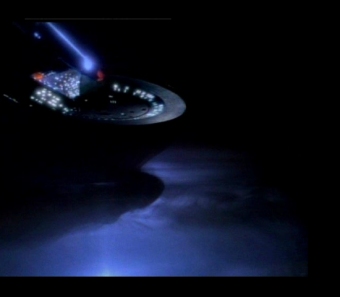|

In Star Trek, a protostellar nebula is a type of nebula
that contains high levels of particle flux. This flux prevents
starships from staying inside for more than 72 hours, but it also hides
them from sensor scans. This phenomenon should not be confused with the
other Star Trek phenomenon proto-nebulae, which appear to be
newly-forming interstellar dust clouds. The term proto-stellar nebulae
implies a nebula that is at a later stage of its life when it is
forming proto-stars. The McAllister C-5 Nebula is an example of a
protostellar nebula. (TNG: "Chain of Command, Part I").
The protostellar phase is an early stage in the process
of star formation. For a solar-mass star it lasts about 100,000 years.
It starts with a core of increased density in a nebula, a protostar is
formed by contraction out of the gas of giant molecular cloud in the
nebula and the process ends with the formation of a T Tauri star, which
then develops into a main sequence star. This is heralded by the T
Tauri wind, a type of super solar wind that marks the change from the
star accreting mass into radiating energy.
|
|
